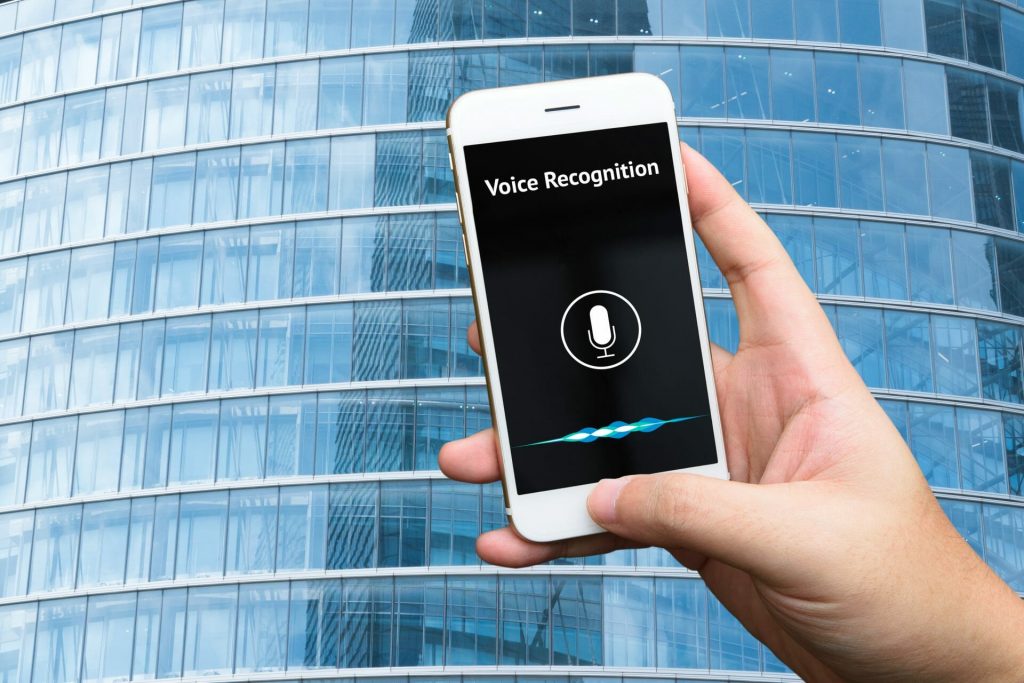Most people have encountered speech recognition technology and many use it on a daily basis. This could mean using a smart speaker at home, a chatbot to order takeout, or dictating notes to save time and effort at work.
When you consider that one study predicted that 44.2% of internet users and 38.5% of the total population would use a voice assistant at least monthly during 2020, it’s clear that speech recognition is already part of our lives. But not everyone understands how it works, how it is evolving, and how to tap into this useful technology’s true potential.
What is speech recognition?
Speech recognition is the capacity of a machine or program to recognize words spoken aloud and then turn them into readable text. This type of technology can capture speech much faster than people can type, with clear benefits for all involved.
More sophisticated speech recognition technology is able to adjust to the extremely complex and variable nature of human speech. These solutions can now accurately understand a wide range of speech patterns, styles, languages, dialects and accents. They are also able to distinguish speech sounds from background noise. (Which means when you’re in a car or noisy shopping mall, you can still access the information and services you need.)
Voice recognition technology, on the other hand, is a biometric solution that recognizes a person’s voice for authentication purposes.
Keeping it simple and scalable
Components of automatic speech recognition are complex, and the parts of a speech recognizer are intricate, but the right automatic speech recognition (ASR) engine can make it easy to build a user-friendly voice-based solution or benefit from speech enabled services.
As a business, it’s important to choose a speech recognition partner that can provide affordable, flexible and high-performing speech recognition software that works for a large and diverse customer base without the need for costly expert services and technical support.
Speech recognition technology is getting smarter
In recent years, the adoption of AI-enabled technology has gained momentum. A PwC survey notes that 52% of firms have expedited their AI deployment plans, and as many as 86% believe AI will become a “mainstream technology” in their organization.
Voice automation is one field where AI is already adding value in many industries. Advanced speech recognition technologies, like LumenVox’s solutions, now use AI and deep machine learning to enhance the accuracy, efficiency and usability of voice-enabled applications and services.
With these capabilities, it’s possible for a speech-enabled application or service to cater for multiple dialects and accents with a single ‘global’ language model. For organizations that serve a diverse base of people, this eliminates the need to implement individual language packs to support various dialects and accents—making a substantial dent in complexity and cost.
How to put this technology to use
There are so many areas in which speech recognition solutions can add value, in a personal and business context.
In the contact center environment, this technology can be used in multiple ways, from making predictive dialers more accurate and intelligent to powering voice-enabled chatbots that can interact with customers in a conversational way, offering relevant information and assistance. Using quality speech recognition technology in these ways helps to ramp up productivity and enhance the customer experience.
For people with disabilities, speech recognition software uses closed captions to convert spoken words into text, allowing those with hearing impairments to comprehend what others are saying.
Speech recognition technology can also help those who have limited use of their hands to interact with computers by allowing them to utilize voice instructions rather than typing.
In other areas, like language education, speech recognition software recognizes the user’s voice and provides pronunciation assistance.
Voice also plays a key role in the Internet of Things (IoT) user experience. Today, homes and businesses are using smart speakers to control a variety of smart ‘things’, from fridges, mirrors and smoke alarms to medical devices. Currently, one of the most popular applications of this technology in the IoT environment is in-car speech recognition. This approach is steadily transforming the way we drive and interact with our vehicles, with the overall aim of keeping hands free, and eyes on the road. Automotive World predicts that voice assistants will be embedded in nearly 90% of new vehicles sold globally by 2028. To discover more about the world of speech recognition technology and the possibilities open to you, watch our series of short videos: Speech Recognition 101 Part 1 and Speech Recognition 101 Part 2.





